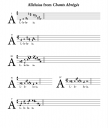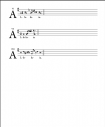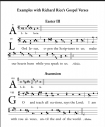New melismatic Mass alleluia?
-
Is there a collection (or at least 2-3 settings) of melismatic 'Mass Alleluia' (i.e. with a jubilus) that are somewhat easier than those found in the Graduale? The idea is to have something that the congregation can easily sing (I'm aware some people will disagree, but that's what I have to work with).
I am thinking something like the one in the Anglican Use Gradual, where the ordinary congregations can pick up the jubilus quite easily. I have looked at the Mode II and IV which seem the most promising (although the jubilus for Mode II is not easy) and I was wondering if any composers had written simpler ones, similar to that of the AUG? -
What laudable efforts you are making! I was going to suggest the AUG one, but see that you are already onto it. Perhaps you could use it (it is so very easy and will wear well) as an introduction to better ones after they get accustomed to it. Meanwhile, you could consider some of the less challenging ones in the GR. There are some there that a congregation could easily master and love within two months of patient use. It is absolutely joyous that you are pursuing this path.
If it doesn't seem feasible for you to tackle an easier one from the GR, you could write one yourself in modal style. You could ask Fr Columba to write some for you. Meanwhile begin using the AUG one as one to use, say, in Ordinary Time.
It is very encouraging for all that you are doing this. -
Sorry to disappoint M. Jackson, but I am one of the most musically illiterate people around, and couldn't compose to save my life.
However, for a variety of reasons (which I will not go into here), I have landed up as a liturgical adviser of sorts at some very large parishes - which also includes music. I just make suggestions and those in charge of the music try it out and give me their feedback. Practically all the choirs are volunteer, and ad hoc - groups of people who are more comfortable singing publicly, but with no real training and no trained choir directors. A lot of the singing is done 'by ear'. Most of the music is from an established repertoire of 50s and 60s staples that some might have assumed had vanished off the face of the earth. So I do not think we will be getting to the GR any time soon! I would be happy if we even touched the Simplex.
I just proposed the AUG Alleluia and they liked my explanation of the jubilus and the variation it gives. So I was wondering if I could suggest a couple of others for variety and/or seasonal variation.
-
I'd encourage you to start playing around with doing compositions, you might find that it's not as hard to adapt as you think.
Starting with the GR Alleluia,
1. Create a super-simplified version which just has one note per syllable. Which note seems to be the most important one to pick? How many beats should each syllable be? Does it seem to flow together as a musical phrase?
2. Now add just a little complexity to it. On a note you want to extend, change it into a torculus or porrectus. Put a little flourish on the last syllable of a phrase.
3. Pick one place where it seems most appropriate to put in a longer melisma, like on the final syllable or the last stressed syllable.
This was my approach when creating new alleluias because my schola couldn't handle the complicated stuff but I didn't want to bail entirely. They weren't magnificent compositions by any means, but it was a great learning process. And most of them were singable, although I did find a few that didn't work for the group.
The other thing I did was to be pretty consistent on the alleluia refrain; I think I used three for Lent/Advent/Ordinary. The composition was for the verse, which was sung just by the schola and not the congregation. So we had a chance to practice it before Mass.Thanked by 1M. Jackson Osborn -
This exercise interested me, so I did a bit of fooling around, and thus here are three "trimmed" Alleluias as the result:
annotation:8.;
%%
(c3)AL(d!ef!/)le(f_e)lú(fh)ia.(hihh , ehf/gf/fe.) (::)annotation:2.;
%%
(f3)AL(e)le(f)lú(hi~)ia.(i_h/iggf. , hv.iji. , e.f!gwhf.) (::)annotation:8.;
%%
(c3)AL(e)le(ef)lú(fg)ia.(e. , giHG'FEffe.) (::)
Go ahead and opine about whether they are successful; my aim was to reduce the number of notes until it got down to only those that were most essential to the effect of the original. -
Good examples and clever work, Jonathan.
This is exactly what we need when even the simplest GR alleluyas are not feasible. And, not to be overlooked is the one in the AUG.
There is no excuse (except preferred dumbness - which is a 'reason' and not an 'excuse') for people to be singing these tacky triple alleluyas (yes, yes, I know: they're in the GS and are 'approved' [is there anything that isn't if Americans scream loud enough?]), and they are used in the Divine Office... which is exactly where they belong!)
With examples such as those you have shared hear, anyone could be singing an alleluya that really belongs at mass.
Fr Columba is an excruciatingly fine composer of chant. It would be a godsend were he to provide some actual mass alleluyas with simple jubili that any congregation could master in two Sundays.
Carl's advice is really good, and should encourage those who have even a modicum of resident original musical thought.
-
I am currently on the hunt for more of these, having just implemented the AUG alleluia, with fine congregational response. If I compose one of my own, I'll post it up.
Welcome to the MusicaSacra Forum!
To participate in the discussions on Catholic church music, sign in or register as a forum member, The forum is a project of the Church Music Association of America.
Categories
- All Discussions21,112
- General Music Discussion7,596
- Job Openings1,306
- Management of Music Programs833
- Choral Matters519
- Church Documents and Rubrics504
- CMAA Notes291
- Events651
- For Newcomers: Read First23
- Sacred Polyphony528
- Hymnody821
- Gregorian Chant: General2,582
- ↳ Graduale Romanum and Liber Usualis354
- ↳ Graduale Simplex55
- ↳ Semiology57
- Vernacular Plainsong671
- Anglican Use and Anglican Chant66
- Organ, Other Instruments and Repertoire414
- New Composition/Works in Progress1,208
- Recordings222
- Music for Hispanic Ministry151
- Music Education: Children205
- Music Education: General214
- News Items242
- Positions Wanted58
- General Discussion: Catholicism723
- Amusements170
- General Discussion1,001
- Opinions113







